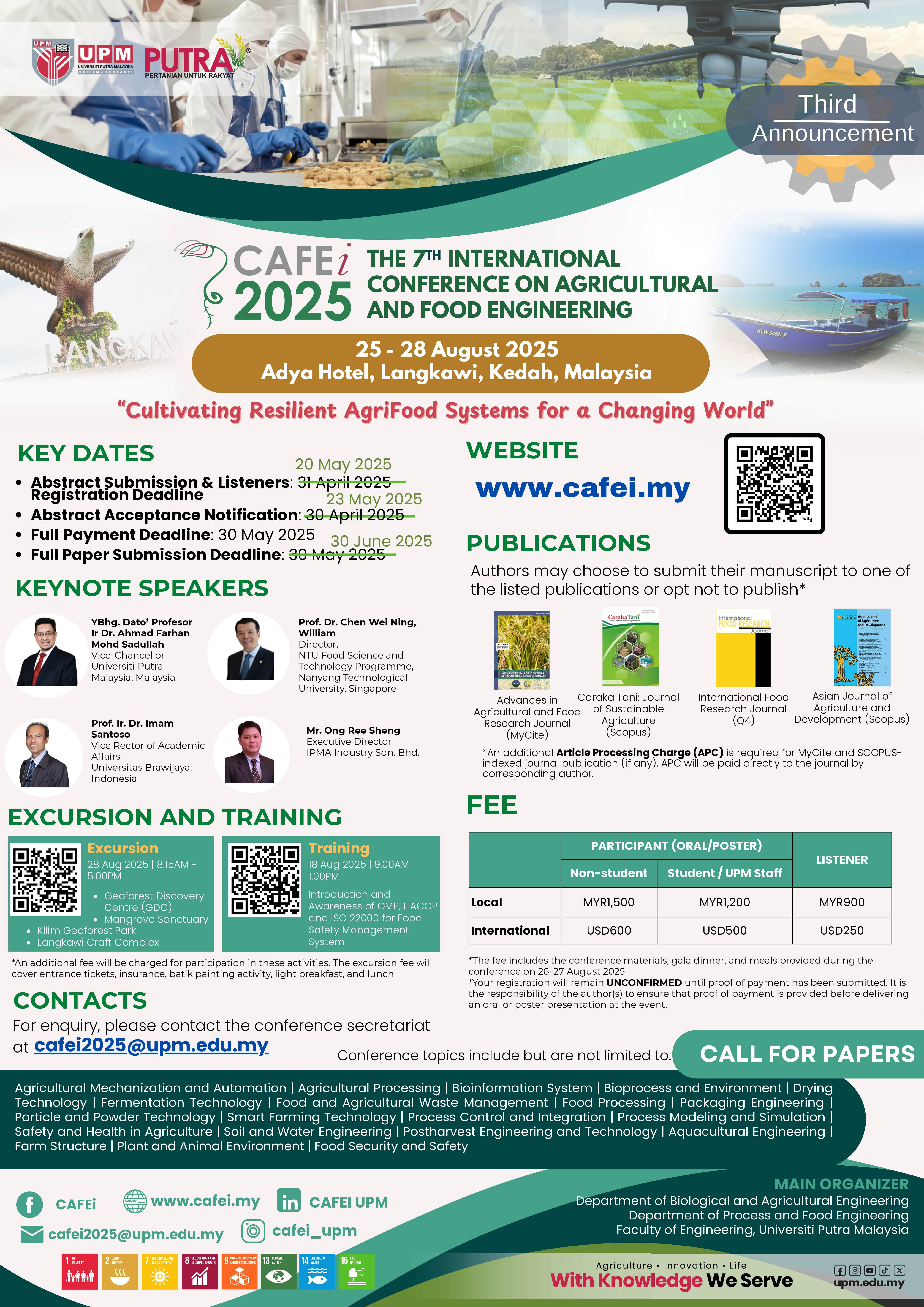Performance Assessment of Evaporative-Cooled Storage System in Short-Term Storage of Fruit Vegetables during Transportation
DOI:
https://doi.org/10.36877/aafrj.a0000351Abstract
The study presents the performance and potential of an evaporative-cooled storage system for the short-term storage of fruit vegetables during transportation. The evaporative cooler, storage unit, power supply, control panel, and real-time data monitoring system are the components of the evaporative-cooled storage system. In this study, the system performance was assessed in terms of the cooling profile of the storage unit (temperature and relative humidity profiles), and postharvest quality of the selected fruit vegetables (chili, tomato, and long bean) for the fresh market. Three storage treatments for the selected fruit vegetables were investigated, i.e., evaporative-cooled storage unit (T1), ambient room (T2), and cold room (T3). The average temperature inside the storage unit was T3 < T2 < T1. T1 demonstrated RH of > 90 %, in agreement with recommended RH for vegetable storage. Post-five-hour storage treatments, vegetables stored under T1 exhibited the least weight loss as compared to T2 and T3. The application of an evaporative-cooled storage system provided potential to preserve fruit vegetable postharvest quality during transportation.
Downloads
Published
How to Cite
Issue
Section
License
Copyright (c) 2023 Masniza Sairi, Nur Syafini Ghazali, Joanna Cho Lee Ying, Mohd Shukry Hassan Basri, Sharifah Hafiza Mohd Ramli, Mohd Fazly Mail, Arina Mohd Noh, Yahya Sahari, Mohd Shahrir Azizan, Mohd Zaffrie Mat Amin, Azman Hamzah, Azhar Mat Noor, Mohamad Abhar Akmal Hamid, Nur Izzati Muhsin, Mohd Hafiz Mohd Amin Tawakkal, Amir Redzuan Shamsulkamal, Shafie Alwi, Mohd Zaimi Zainol Abidin, Muhammad Aliq Jamaluddin, Mohd Daniel Hazeq Abdul Rashid, Mohd Azmirredzuan Sani

This work is licensed under a Creative Commons Attribution-NonCommercial 4.0 International License.
Author(s) shall retain the copyright of their work and grant the Journal/Publisher right for the first publication with the work simultaneously licensed under:
Creative Commons Attribution-NonCommercial 4.0 International (CC BY-NC 4.0). This license allows for the copying, distribution and transmission of the work, provided the correct attribution of the original creator is stated. Adaptation and remixing are also permitted.

This broad license intends to facilitate free access to, as well as the unrestricted reuse of, original works of all types for non-commercial purposes.
The author(s) permits HH Publisher to publish this article that has not been submitted elsewhere.

.png)

.jpg)



